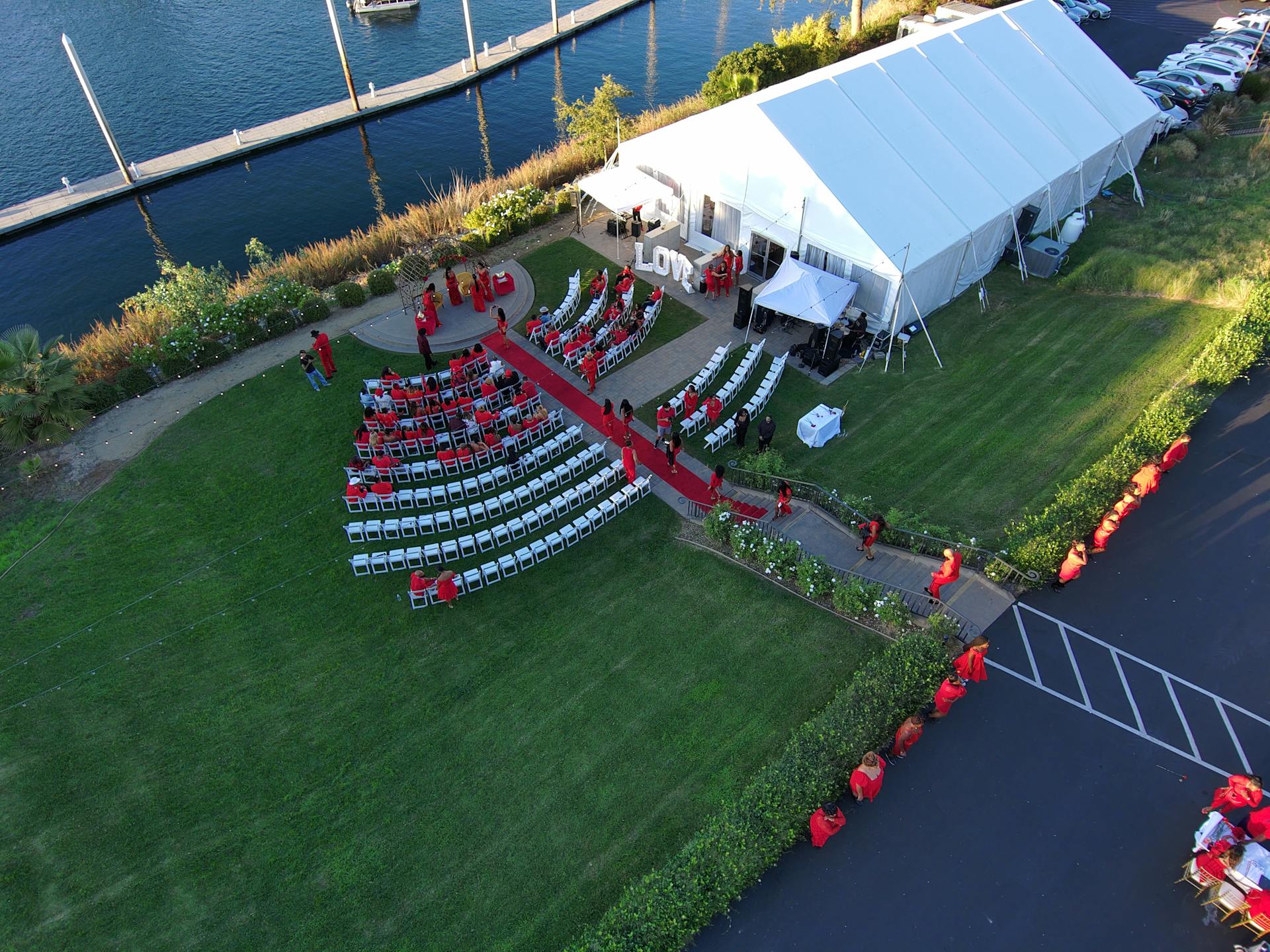
Imagine having a versatile, cost-effective solution that can expand your business infrastructure without the lengthy timelines and hefty expenses of traditional construction. Fabric structures offer precisely that. Whether you're looking for temporary storage, extra workspace, or even a large-scale event venue, these structures can do it—all without sacrificing quality.
Fabric structures provide numerous other advantages for businesses. Find out the benefits in this article so you can consider investing in them, too.
For your interest: Capital Structures
Cost-Effectiveness
One of the most compelling reasons to invest in fabric structures is their lower initial cost compared to traditional buildings. The materials used in fabric buildings are generally less expensive, and the construction process is usually faster and less labor-intensive.
In the long run, large fabric structures also offer significant cost savings. They're typically more energy-efficient, reducing utility bills. Moreover, their low maintenance requirements and risk of damage can lead to lower insurance premiums. These factors combined often result in a faster return on investment (ROI) compared to traditional buildings.
Flexibility and Adaptability
Fabric structures are highly adaptable, so you can customize them to meet specific business needs. Their modular design allows for straightforward expansion or contraction as business requirements change. This flexibility is valuable for companies anticipating growth or fluctuations in demand.
Furthermore, tension fabric structures lend themselves to repurposing or relocation, cutting waste and minimizing environmental impact. This adaptability is especially beneficial for organizations that need to adapt to changing market conditions or relocate to new locations.
Speed of Construction
Do you need a sturdy and spacious structure at the last minute? Fabric buildings can be constructed much quicker than traditional buildings, decreasing downtime and allowing businesses to start operating sooner. This rapid deployment is particularly advantageous for companies that must respond quickly to changing market conditions or seize new opportunities.
The faster construction time also minimizes disruptions to existing operations, reducing lost productivity and revenue. This is especially important for businesses that can't afford to close down during construction.

Sustainability
Many businesses are following sustainability trends by adjusting their work methods and materials. If your organization is one of them, consider fabric buildings.
Fabric structures are increasingly recognized for their sustainability benefits. Their lower energy consumption and reduced waste contribute to a reduced carbon footprint. Many fabric buildings are also constructed using sustainable materials and incorporate energy-efficient design features.
Beyond environmental benefits, fabric structures also offer long-term sustainability. Their durability and longevity mean they can withstand the changes caused by environmental conditions.
For your interest: Capitalone Venture Benefits
Versatility
Fabric structures apply to various applications, making them suitable for businesses across multiple industries. From warehousing and logistics to retail and commercial spaces, industrial fabric structures offer versatile solutions to meet diverse needs.
The ability to customize fabric structures to specific industry requirements further enhances their versatility. For example, these tensile structures are adaptable to accommodate heavy machinery, offer specialized storage solutions, or create unique retail environments.
Expand your knowledge: Electronic Billing & Payment Solutions
How to Choose a Fabric Structure for Your Business
Selecting the proper fabric structure for your business requires careful consideration of several factors. Here are some key points to keep in mind:
Determine Your Specific Needs
When choosing a fabric structure, assess your specific requirements. The size and capacity required should match your activities or equipment. Evaluate the durability requirements based on the intended use and environmental conditions. Additionally, determine if the structure's appearance fits your corporate image or brand.
Additional reading: American Express Blue Business Cash Card Requirements
Keep Your Budget in Mind
Budgeting is another essential factor. Review your upfront costs for purchasing or leasing a fabric structure. Don’t forget the potential long-term savings from reduced maintenance, lower energy bills, and decreased insurance premiums.
Research Fabric Structure Manufacturers and Suppliers
Not sure where to get your fabric building? Go for reputable manufacturers and suppliers with a proven track record in the industry. Look into how well they can customize structures to meet your specific needs. You can inquire about warranties and guarantees for the fabric, structural components, and installation.
You might enjoy: Put Fabric Softener
Examine the Installation and Maintenance Requirements
The complexity of the installation process determines whether you need professional assistance. Think about ongoing maintenance needs, including cleaning, inspections, and repairs.
Obtain Permits and Approvals
Some locations have local zoning regulations and building codes, which require you to research and comply with them. You must also obtain necessary permits and approvals from relevant authorities.
Factor in Environmental Factors
It’s important to explore how fabric structures will perform in your region’s climate, factoring in temperature extremes, wind loads, and precipitation levels. Environmental impact is another key consideration, as opting for sustainable materials and practices can enhance your structure's longevity and eco-friendliness.
Don't hesitate to check reviews and testimonials as well to gauge how well the tensile structures hold up. Getting first-hand accounts from previous customers will help you decide on the best tension fabric building option for your business.
Conclusion
Choosing fabric structures comes with a host of business advantages—cost savings, flexibility, quick construction, sustainability, and versatility. These benefits help businesses meet their building needs without the headaches of traditional construction. When you weigh the options and consider what's most important for your business, fabric structures stand out as an innovative, adaptable solution that delivers real value.
Featured Images: pexels.com


